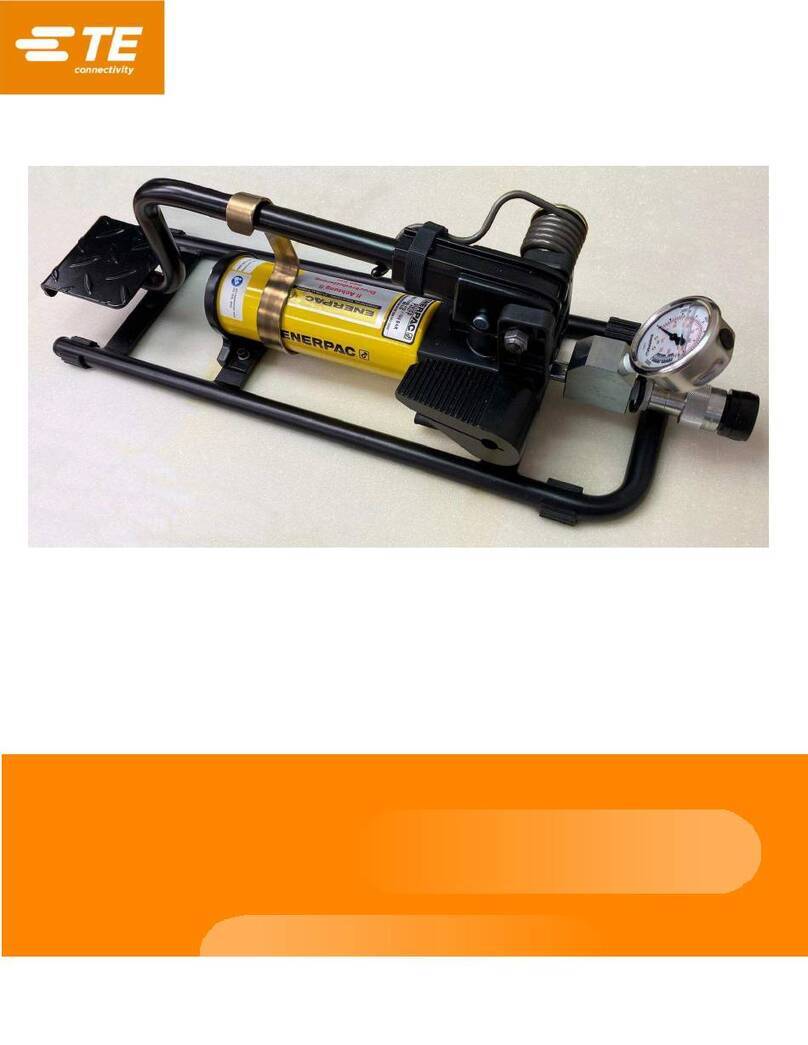
409-10094
5of 10
Rev B
3. OPERATING PRECAUTIONS
3.1. Precautions for the Rechargeable Pump
1. When connecting the coupler, be sure that no foreign objects are attached. If the coupler has become dirty,
clean it carefully before connecting it. Engaging the coupler when foreign objects are present will damage the
seals and lead to oil leakage from the connection.
2. Make sure that the coupler is securely connected. If the unit is pressurized while the coupler is not properly
connected, there will be damage to the seals or the crimp head.
3. Although a flexible hydraulic hose is used, do not bend it while pressure is being applied, or subject the
hose to shocks from metal objects. Either of these will shorten the working life of the hose and may result in
the hose bursting.
4. Never move the pump by pulling on the hydraulic hose or the remote control cords.
3.2. Precautions for the Battery Cartridge and Pump
1. To ensure smooth operation of the pump, always use the pump after it has been stored for at least one hour
at 10°C to 25°C. If the pump is stored for an extended period below -5°C, viscosity of the oil increases.
2. Allow the pump to cool 10 minutes after each 20 minutes of use. The pump was designed for light duty and
cannot be used continuously. Be sure that neither the motor or the oil become hot.
3. Check the hydraulic oil regularly. Replenish the oil when the level becomes low. Use the appropriate
hydraulic oil type.
4. The pump is a precision device and should not be dropped or subjected to shocks or other abuse.
3.3. Precautions for the Battery Cartridge
1. Do not short circuit the contacts or expose the cartridge to water, oil, or solvents.
2. Do not disassemble or attempt to repair the battery cartridge.
3. Do not dispose of the battery cartridge in a fire.
4. Do not drop or abuse the battery cartridge.
5. Do not leave the cartridge in an area where it will be exposed to temperatures greater than 140°F (60°C) for
an extended period.
6. The battery has a limited life. When the crimping capacity becomes about one half that of the original
capacity, the battery should be replaced.
7. If the battery is stored without being charged, natural drainage will cause the power to be reduced. The
battery should be completely re-charged every three months if not in use.
3.4. Precautions for the Battery Cartridge Charger
This unit is for charging the battery cartridge in the pump kit only.
1. The LED indicator is green while the unit is charging the battery. The indicator turns an orange color when
the charging is completed.
2. Allow battery cartridges to cool completely before charging.
3. Allow at least 15 minutes between charges when charging several cartridges in succession.
4. Charge the batteries at an ambient temperature of 50°F to 95°F (10°C to 35°C). Charging time is
approximately 25 minutes for battery number 1804113-1; 45 minutes for battery number 1804112-1.
5. Never short circuit the output terminals.
6. Do not expose the charger to water, oil, or solvents.
7. Do not disassemble the charger, attempt to modify it, drop it, or otherwise abuse it.






























